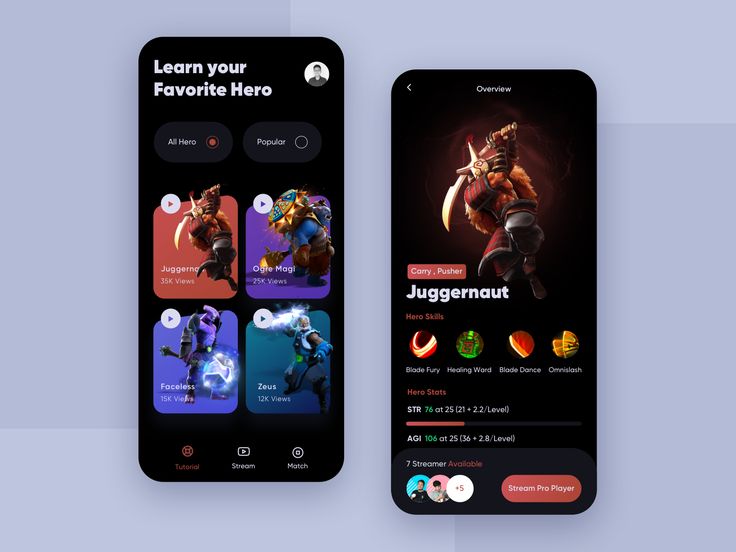In the ever-evolving world of mobile gaming, Cost Per Install (CPI) for mobile games continues to be a critical metric for developers and marketers alike. As Afiniti global navigate through 2024, understanding the nuances of CPI is more crucial than ever for achieving success in this highly competitive market. This comprehensive guide will delve into the current state of CPI, explore emerging trends, and provide actionable strategies to optimize your mobile game marketing efforts. Whether you’re a seasoned professional or new to the mobile gaming industry, this blog will equip you with the knowledge you need to make informed decisions and stay ahead of the curve in the dynamic landscape of user acquisition.
What is CPI?

Cost Per Install (CPI) is a fundamental metric in mobile game marketing that refers to the average cost incurred to acquire a single app installation. It’s calculated by dividing the total cost of a marketing campaign by the number of installs generated. This metric is essential for evaluating the efficiency of user acquisition efforts and determining the return on investment (ROI) for marketing campaigns. CPI helps developers and marketers understand how much they’re spending to bring new users into their game, which is crucial for budgeting, forecasting, and optimizing marketing strategies. While CPI is not the only metric to consider in mobile game marketing, it serves as a valuable benchmark for comparing the cost-effectiveness of different campaigns, channels and targeting strategies. Understanding and optimizing CPI is particularly important in the mobile gaming industry, where user acquisition costs can significantly impact a game’s profitability and long-term success.
Current CPI Landscape

The mobile gaming market in 2024 continues to be highly competitive and dynamic, with CPI rates varying significantly across different factors. Understanding these variations is crucial for developing effective marketing strategies and setting realistic expectations for user acquisition costs. Here’s an in-depth look at the current CPI landscape:
1. Genre differences:
The type of game you’re promoting has a substantial impact on CPI rates. Casual games, which typically have broader appeal and simpler gameplay mechanics, tend to have lower CPIs compared to mid-core or hardcore games. This is partly due to the larger potential audience for casual games and the generally lower commitment required from players. On the other hand, mid-core and hardcore games often target more specific audiences and may require higher marketing spend to reach and convert potential players. For example, a simple puzzle game might have a CPI of $1-$2, while a complex strategy game could see CPIs of $5-$10 or more.
2. Regional variations:
Geographic location plays a significant role in determining CPI rates. North America and Western Europe continue to have higher CPIs compared to emerging markets in Asia, Latin America, and Africa. This disparity is due to factors such as higher competition for user attention, greater purchasing power, and more mature mobile markets in developed regions. For instance, a game might have a CPI of $3-$4 in the United States, but only $0.50-$1 in India or Brazil. Marketers need to consider these regional differences when planning global campaigns and allocating budgets across different markets.
3. Platform impact:
The choice between iOS and Android can significantly affect CPI rates. Generally, iOS sees higher CPIs than Android due to differences in user behavior, monetization potential, and the overall ecosystem. iOS users typically demonstrate higher engagement and in-app purchase rates, making them more valuable to advertisers and thus driving up acquisition costs. The recent privacy changes implemented by Apple have also impacted targeting capabilities on iOS, potentially leading to fluctuations in CPI rates. Marketers need to carefully consider the balance between cost and user value when deciding how to allocate their budget between platforms.
4. Seasonal fluctuations:
CPI rates can vary significantly depending on the time of year. Holiday seasons, particularly the fourth quarter, often see increased competition and higher CPIs as advertisers compete for users during peak shopping periods. Similarly, certain game genres may experience CPI spikes during relevant seasons or events. For example, sports games might see higher CPIs during major sporting events or at the start of sports seasons.
5. Ad format preferences:
The effectiveness and cost of different ad formats can impact overall CPI rates. In 2024, video ads, particularly rewarded video and playable ads, continue to be highly effective but may come with higher costs. Interstitial ads and banner ads generally have lower costs but may also result in lower conversion rates. The growing popularity of native ads and influencer marketing is also influencing CPI rates across different channels.
Understanding these factors and how they interact is crucial for developing a nuanced and effective user acquisition strategy in the current mobile gaming landscape. Marketers need to continually analyze and adapt to these trends to optimize their CPI and maximize the return on their marketing investments.
Factors Influencing CPI in 2024

Several key factors are shaping CPI trends in the mobile gaming industry this year. Understanding these influences is crucial for adapting your marketing strategies and staying competitive in the user acquisition landscape:
1. Privacy changes and regulations:
The ongoing evolution of privacy regulations and platform-specific changes continue to have a significant impact on targeting capabilities and, consequently, CPI rates. Apple’s App Tracking Transparency (ATT) framework, introduced in 2021, has matured, and its effects are now more clearly understood. Advertisers have had to adapt their strategies to work within these constraints, often resulting in less precise targeting and potentially higher CPIs for iOS users. Similar privacy-focused changes are being implemented or considered on other platforms, including Google’s Privacy Sandbox for Android. These shifts are pushing marketers to rely more on contextual targeting, first-party data, and innovative approaches to user acquisition, which can influence CPI rates across the board.
2. AI-driven optimization:
Advanced machine learning algorithms and artificial intelligence are playing an increasingly important role in campaign optimization. These technologies are helping advertisers improve the efficiency of their campaigns by predicting user behavior, optimizing bid strategies, and personalizing ad experiences. AI-driven tools can analyze vast amounts of data to identify the most promising user segments and adjust campaigns in real time, potentially leading to more cost-effective user acquisition. However, the adoption of these technologies may also contribute to a more competitive landscape, as advertisers who leverage AI effectively gain an edge in user acquisition.
3. Short-form video and new ad formats:
The continued popularity of platforms like TikTok, Instagram Reels, and YouTube Shorts is significantly influencing ad creative strategies. Short-form video content has become a dominant format for user engagement, prompting advertisers to adapt their creatives accordingly. This shift is impacting CPI rates as advertisers experiment with new formats and compete for user attention in these fast-paced environments. The effectiveness of these new formats in driving installs can vary, potentially leading to fluctuations in CPI rates as the market adjusts.
4. Economic factors:
Global economic conditions continue to play a crucial role in shaping the mobile gaming and advertising landscape. Economic uncertainties, inflation rates, and changes in consumer spending habits all impact both advertising budgets and user behavior. In times of economic downturn, users may be more hesitant to spend money on in-app purchases, potentially affecting the lifetime value (LTV) of acquired users and influencing how much advertisers are willing to spend on acquisition. Conversely, during economic upswings, increased competition for ad space can drive up CPI rates.
5. Consolidation in the ad tech industry:
Mergers, acquisitions, and partnerships within the ad tech industry can have ripple effects on CPI rates. As larger players consolidate their positions and new technologies emerge, the dynamics of ad buying and selling can shift. This consolidation can lead to changes in pricing structures, available inventory, and targeting capabilities, all of which can impact CPI rates across different channels and platforms.
6. Evolving user expectations:
As mobile users become more sophisticated and discerning, their expectations for game quality and ad experiences are evolving. This shift can impact conversion rates from ads to installs, potentially affecting CPI rates. Games that meet or exceed these expectations may see lower CPIs due to higher conversion rates, while those that fall short may struggle with higher acquisition costs.
7. Cross-platform and cloud gaming trends:
The growing trend towards cross-platform gaming and the emergence of cloud gaming services are introducing new dynamics to the mobile gaming market. These developments can affect user acquisition strategies and CPI rates by changing how and where users discover and access games. Advertisers may need to adapt their approaches to target users across multiple platforms or within cloud gaming environments, potentially impacting overall CPI rates.
By staying attuned to these factors and understanding their potential impacts, mobile game marketers can better navigate the complex landscape of user acquisition in 2024. Adapting strategies to account for these influences will be key to maintaining competitive CPI rates and achieving sustainable growth in the ever-changing mobile gaming ecosystem.
Strategies to Optimize CPI

To maintain competitive CPIs in 2024 and beyond, mobile game marketers need to employ a range of sophisticated strategies. Here are some approaches to consider:
1. Creative optimization:
Investing in high-quality, engaging ad creatives tailored to each platform is more critical than ever. With the rise of short-form video content, creating compelling, platform-specific ads that capture attention quickly is essential. Experiment with different creative elements, such as characters, storylines, and gameplay footage, to identify what resonates best with your target audience. Utilize dynamic creative optimization (DCO) tools to automatically test and adjust creative elements based on performance data. Additionally, consider incorporating interactive elements or playable ads that give users a taste of the game experience, potentially improving conversion rates and lowering CPI.
2. Advanced audience targeting:
Leverage first-party data and contextual targeting to reach high-value users more effectively. With privacy changes limiting traditional targeting methods, focus on building robust first-party data strategies. This might include creating detailed user profiles based on in-game behavior, preferences, and purchase history. Use this data to create lookalike audiences and refine your targeting. Additionally, explore contextual targeting options that focus on the content and context in which ads are displayed rather than relying solely on user data. This approach can help maintain targeting effectiveness while respecting user privacy.
3. Comprehensive A/B testing:
Continuously test and refine your ad campaigns to improve performance. Implement a structured A/B testing program that covers all aspects of your user acquisition efforts, including ad creatives, targeting parameters, bidding strategies, and landing pages. Use statistical significance to ensure your test results are reliable, and be prepared to iterate quickly based on your findings. Consider using multivariate testing for more complex scenarios where multiple variables need to be optimized simultaneously.
4. Diversification of marketing channels:
While major ad networks remain important, exploring alternative channels can help optimize overall CPI. Investigate opportunities in influencer marketing, which can provide authentic exposure to engaged audiences. Optimize your app store presence through app store optimization (ASO) techniques, improving organic discovery and potentially lowering overall CPI. Explore emerging platforms and ad networks that might offer lower competition and more cost-effective user acquisition opportunities. Additionally, consider implementing a robust content marketing strategy to build brand awareness and drive organic installs, which can complement paid user acquisition efforts.
5. Retention and re-engagement focus:
Shift some of your budget and focus toward retaining and re-engaging existing users to balance acquisition costs. Implementing effective retention strategies can increase the lifetime value of users, justifying higher initial CPIs. Develop a comprehensive retention plan that includes personalized in-game experiences, regular content updates, and targeted push notifications. For re-engagement, use retargeting campaigns to bring lapsed users back to the game. By improving retention and reactivation rates, you can reduce the pressure on constant new user acquisition, potentially allowing for more flexibility in CPI targets.
6. LTV-based bidding strategies:
Implement sophisticated bidding strategies based on predicted user lifetime value (LTV). Use machine learning models to forecast the potential value of users based on early indicators and adjust your bidding accordingly. This approach allows you to bid more aggressively for users likely to have a high LTV while maintaining lower bids for less valuable users, optimizing your overall return on ad spend (ROAS) and potentially justifying higher CPIs for certain user segments.
7. Cross-promotion and partnerships:
Leverage cross-promotion within your game portfolio or through partnerships with complementary games or apps. This strategy can help you acquire users at a lower cost by tapping into existing user bases. Develop mutually beneficial partnerships with other developers or brands that target similar audiences but are not direct competitors. These collaborations can provide cost-effective user acquisition opportunities and help diversify your user acquisition mix.
8. Localization and cultural adaptation:
Invest in thorough localization and cultural adaptation of both your game and marketing materials. This goes beyond simple translation to include adapting creatives, messaging, and even gameplay elements to resonate with specific cultural contexts. By improving the relevance and appeal of your game in different markets, you can potentially improve conversion rates and lower CPI in those regions.
9. Predictive analytics and user scoring:
Implement predictive analytics to identify and target users who are most likely to install and engage with your game. Develop user scoring models that consider various factors such as demographics, device characteristics, and behavioral patterns to predict the likelihood of installation and long-term engagement. Use these scores to inform your bidding and targeting strategies, focusing your budget on the most promising potential users.
10. Automated campaign management:
Utilize automated campaign management tools and AI-driven platforms to optimize your campaigns in real time. These tools can adjust bids, reallocate budget across channels, and optimize targeting based on performance data much faster and more efficiently than manual management. By responding quickly to market changes and performance fluctuations, automated systems can help maintain optimal CPI rates across your campaigns.
By implementing these strategies and continuously refining your approach based on performance data and market trends, you can work towards optimizing your CPI in the competitive mobile gaming landscape of 2024. Remember that the most effective strategy will often involve a combination of these approaches, tailored to your specific game, target audience, and market conditions.
Looking Ahead

As we look towards the future of mobile game marketing and user acquisition, it’s clear that the landscape will continue to evolve rapidly. Staying informed about CPI trends and best practices will be crucial for success in this dynamic environment. Here are some key considerations and predictions for the future of CPI and user acquisition in mobile gaming:
1. Increased importance of first-party data:
As privacy regulations continue to tighten, the value of first-party data will become even more critical. Developers who can effectively collect, analyze, and leverage their user data will have a significant advantage in optimizing their user acquisition strategies and managing CPI.
2. Further advancements in AI and machine learning:
We can expect to see even more sophisticated AI-driven tools for campaign optimization, predictive analytics, and personalization. These advancements may lead to more efficient spending and potentially help stabilize or even reduce CPIs for marketers who effectively leverage these technologies.
3. Emergence of new ad formats and platforms:
As technology evolves, we’re likely to see new ad formats and platforms emerge. This could include more immersive ad experiences, potentially leveraging augmented reality (AR) or virtual reality (VR) technologies. Marketers will need to stay agile and be ready to experiment with these new formats to find cost-effective acquisition channels.
4. Growing focus on user quality over quantity:
As the mobile gaming market matures, there may be a shift towards prioritizing the acquisition of high-quality, engaged users over sheer volume. This could lead to strategies that accept higher CPIs for users with greater lifetime value potential.
5. Increased importance of organic growth strategies:
With the potential for continued increases in paid acquisition costs, developers may place more emphasis on organic growth strategies. This could include a greater focus on app store optimization, content marketing, and community building to drive installs at a lower cost.
6. Evolution of attribution models:
As the industry adapts to a more privacy-centric environment, we may see new attribution models and measurement techniques emerge. These could change how marketers calculate and optimize CPI, potentially leading to new best practices in campaign management.
7. Integration of blockchain and web3 technologies:
The potential integration of blockchain technology and web3 concepts into mobile gaming could introduce new models for user acquisition and engagement. This might include token-based incentives or decentralized advertising networks, which could significantly impact how CPI is calculated and optimized.
8. Sustainability and ethical considerations:
There may be a growing emphasis on sustainable and ethical user acquisition practices. This could include more transparent advertising, fair competition practices, and a focus on acquiring users who are genuinely interested in the game rather than using misleading tactics to drive installs.
As the mobile gaming industry continues to grow and evolve, success will depend on the ability to adapt quickly to new trends, technologies, and user expectations. Marketers and developers who stay informed, remain flexible, and are willing to experiment with new strategies will be best positioned to navigate the challenges and opportunities in mobile game user acquisition.
Conclusion:
while CPI remains a crucial metric in mobile game marketing, it’s important to view it as part of a broader strategy that includes user retention, engagement, and lifetime value. By taking a holistic approach to user acquisition and game growth, developers and marketers can build sustainable success in the competitive world of mobile gaming.







